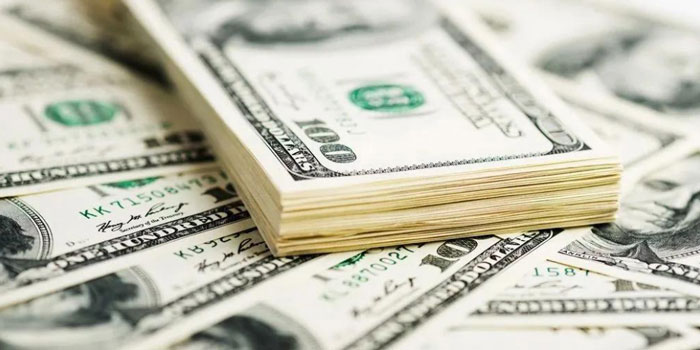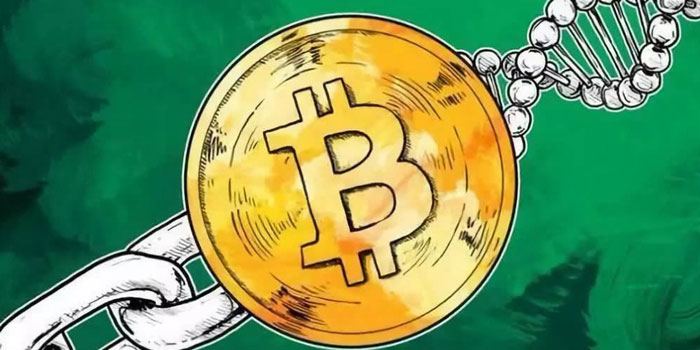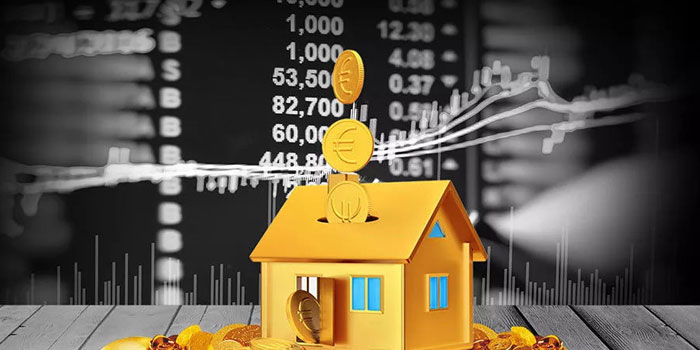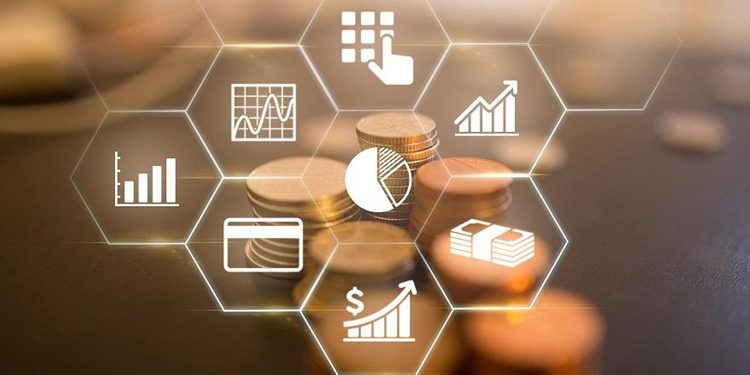How to view asset bubbles?
Advertisement
Si Gyeongmin
Jan 04, 2024
What is a bubble?
The focus of the bubble-related policy debate is what policymakers should do when faced with a rapid rise in asset prices and the expected value of these assets does not change accordingly. This situation is a wake-up call for policymakers (and the public), because the inexplicably rapid rise in asset prices may indicate that asset prices are too high, leaving the market vulnerable to the same rapid decline in prices. What people worry about is that asset prices are as fragile as a soap bubble, which will burst with a light touch, or continue to expand like a bubble until it reaches its limit, and then burst. The impact of a sharp drop in asset prices on the economy can be serious, as can be seen from the collapse of US housing prices in the mid-2000s.
A striking aspect of this debate on how to deal with bubbles is that this debate largely ignores the theoretical models designed by economists to study bubbles. For various other economic issues, policymakers usually seek guidance from economic models to help them formulate economic policies, just as engineers refer to models of the physical world when designing and building bridges. For example, the central bank has long used macroeconomic models to guide them as to what kind of monetary policy can best enable them to achieve their mission of maintaining economic stability. Similarly, in the area of fiscal policy, the Congressional Budget Office uses economic models to study how households respond to different policies that affect government revenue and expenditure. The results of the study allow policymakers to understand the possible financial impact of the various policy recommendations they are considering.

However, as far as asset bubbles are concerned, the theoretical models designed by economists to study this phenomenon have not yet been included in policy analysis. For economists, the value of an asset comes from the income it pays. According to this logic, the transaction price of an asset should be the discounted value of the expected income of the asset during its life cycle, that is, the basic value of the asset.
Generally speaking, people are unwilling to pay a price higher than the expected return value for an asset. Similarly, if the price of an asset is lower than the expected value of income, investors should treat it as a cheap asset and snap it up to increase its price. In fact, in many economic models, assets are expected to be traded at their basic value.
Therefore, economists define a bubble as an asset trading at a price different from its basic value. Although many models predict that a bubble will not occur, economists have devised models in which assets can be traded at an excessively high price because it exceeds the basic value. These models may reflect concerns that asset prices are sometimes too high. However, these models have not played a prominent role in discussions about how policymakers should respond when they suspect a bubble. On the contrary, policymakers often consider these models to be too esoteric and of limited practical significance, and therefore ignore them.

How do policymakers view bubbles?
Before the global financial crisis that began in 2007, the debate on how policymakers should respond to asset bubbles focused on two specific policies. One of the calls is that when the central bank suspects that a bubble has formed, it should raise interest rates to curb the bubble. Another view calls for the central bank to wait and see what happens to asset prices suspected of being bubbles, and then intervene as necessary when prices fall. According to this view, the central bank should only intervene when asset prices plummet and only when there is reason to intervene to avoid the negative effects of the plummet.
The first option is to raise interest rates when a potential bubble is discovered, the so-called “running against the wind." Trichet explained the meaning of this method very well:
"The headwind principle describes a tendency to raise interest rates cautiously when the price of potentially harmful assets is found to rise, even beyond the level required to maintain price stability in the short- and medium-term. The central bank has adopted a slightly tightened policy in order to better ensure that prices remain stable for a longer period of time, which may curb the future growth of the bubble, or at least not contain the bubble as it would for similar macroeconomic prospects under more normal market conditions."
Even before the financial crisis, related studies believe that historical evidence shows that periods of rapid asset price growth are often accompanied by recessions and financial crises, especially when asset price increases are accompanied by rapid credit growth. Based on these models, they believe that central banks facing rapid asset price increases should actively try to curb asset prices by raising interest rates, even if it is not clear whether asset price increases are in line with the asset bubble defined by economists.

Another policy option proposed by Bernanke and Gertler is that the central bank should postpone its response to rapid asset price increases and only intervene when asset prices plummet in a way that endangers economic activity. This is a wait-and-see method. The point that Bernanke and Gertler emphasized is that raising interest rates means a kind of blunt intervention that not only affects asset prices, but also economic activity and inflation. Therefore, they believe that taking action to stabilize asset prices may interfere with the central bank's macroeconomic stabilization task. If soaring asset prices itself leads to inflation and economic overheating, the central bank committed to stabilizing output and prices should certainly respond to ensure that the economy does not overheat and that inflation does not exceed its target interest rate.
However, they believe that if asset prices are rising and the economy is not overheating, the central bank should not intervene. In fact, even if soaring asset prices may cause asset prices to eventually fall, thereby threatening economic activity, the central bank should not intervene. The reason is that, in principle, the central bank should be able to protect the economy from such effects by lowering interest rates after asset prices fall, so as to keep the economy growing at a natural rate. This reaction to an asset bubble is sometimes described as waiting to "clean up the mess" after the bubble collapses, which is why the bubble debate is sometimes described as a "go against the wind and clean up the mess" debate.

Although the relative merits of these two methods were actively discussed before the financial crisis, most policymakers tended to take a wait-and-see attitude. This may be partly due to the boom and bust of technology stocks in the United States in the late 1990s, a period commonly referred to as the internet bubble. As the stock prices of companies specializing in information technology soared, the Fed did not respond to raising interest rates. The Fed chairman at the time did publicly question how policymakers knew whether high asset valuations were driven by irrational prosperity. These remarks attracted considerable attention at the time and were widely interpreted as concerns about rising stock prices. The Fed has not issued any tendency to use interest rate policy to deal with potential bubbles. After the price of technology stocks plummeted and economic activity began to shrink, the Fed began to cut interest rates aggressively. Many people believe that the 2001 recession was quite mild. This fact proves that the wait-and-see approach can work well in practice, and waiting for intervention can still effectively limit the impact of asset price collapses.

However, the global financial crisis that began six years later led many policymakers to reassess the advantages of the wait-and-see approach. Unlike the mild recession that occurred after the collapse of Internet stocks in 2001, the recession that followed the fall in US housing prices in the mid-2000s was severe and lasted. Central bank governors began to believe that such a wait-and-see approach could be costly.
First of all, it is obvious that in the case of rising asset prices, if there is no intervention, risks may accumulate and financial intermediaries face greater losses, thereby making the financial system vulnerable to systemic crises.
Second, the severity of the economic recession following the collapse of housing prices has exposed the limitations of the central bank in terms of stimulus being particularly severely affected, because the central bank can set an effective lower limit for nominal interest rates. Although central banks have indeed developed new tools to circumvent interest rate constraints, such as quantitative easing, forward-looking guidance and negative interest rates, most policymakers believe that central banks do not want to use these tools to stabilize the economy.
Therefore, the mainstream view of policy circles on how to deal with bubbles has shifted from a wait-and-see approach to a new view, that is, policymakers facing potential asset bubbles should take some measures to curb the bubbles. The question now is what might be the best way to contain the growing asset bubble.

From “running against the wind and cleaning up the mess” to "running against the wind and prudential supervision"
Although policymakers began to believe that the wait-and-see approach was too costly after the global financial crisis, they still felt uneasy about the criticism of the “running against the wind” approach.
The resulting shift in thinking has led to a view that in the case of rapid asset prices, the central bank may need to take some action, but not necessarily need to raise interest rates. Another method of controlling potential bubbles is widely welcomed in the policy community, mainly focusing on macro-prudential policies. This approach believes that the central bank should supervise banks in a way aimed at safeguarding the entire financial system, rather than ensuring the health of individual banks. If decisions to improve the prospects of a single bank, such as liquidating risky assets or purchasing certain assets in an attempt to diversify a bank’s holdings, may endanger the entire banking industry, then the two may conflict. This approach believes that instead of raising interest rates when asset prices rise, central banks should pay close attention to the risk exposure of financial intermediaries in asset bubbles, and whether these financial institutions contribute to the expansion of these bubbles. Then, central banks should intervene to limit the types of loans or loan conditions that banks can provide in order to curb the bubble or possibly mitigate its impact when asset prices collapse. For example, central banks can take action to restrict the types of loans that push up asset prices or restrict the use of contracts that are conducive to speculative transactions.

Macro-prudential policies can be used as an alternative tool to prevent asset bubbles, relying on the view that credit is an important driving force behind asset bubbles, or at least the type of asset bubble that policymakers are most concerned about.
If the transaction of bubble assets is financed by credit, then limiting the intervention of financial intermediaries in the amount of lending to bubble assets may be an effective way to control the bubble without requiring interest rate hikes. Therefore, the "headwind and clearing up the mess" before the financial crisis has evolved into a post-crisis "headwind and prudential supervision", or between raising interest rates to curb bubbles and using supervision to curb the inflow of resources into the overheated asset market.
Compared with interest rate policy, one advantage of the macro-prudential approach is that it may target specific financial institutions and specific assets without having a broader impact on macroeconomic results. This has undoubtedly increased the appeal of this approach to policymakers, who are already worried about using blunt tools to combat asset bubbles. However, some people believe that the regulatory approach will only bring innovation to circumvent any regulatory measures that the central bank may introduce. Although financial intermediaries can circumvent the restrictions on the assets and loan conditions they can lend to, they cannot avoid competing with the short-term nominal interest rate set by the central bank. As policymakers turn to more proactively opposing bubbles, the focus of policy debates is on the choice between interest rates and regulation as the right tool to combat bubbles.

Are policies aimed at combating bubbles effective?
Stein believes that monetary policy may be more effective in suppressing bubbles than macro-prudential policies because it is more difficult to circumvent. Some recent studies believe that for completely different reasons, raising interest rates may be ineffective or counterproductive in suppressing bubbles. An example of this criticism is the debate about Riksbank’s 2010 increase in short-term interest rates in Sweden out of concerns about a potential bubble in the real estate market.
Swensen elaborated on his case against going against the wind, which was further elaborated in Swensen. Some of his cases reflect the initial criticism of the wait-and-see advocates that the interest rate is an overly rigid tool that may not be conducive to the central bank's goal of achieving macroeconomic stability. To illustrate this point, Swensen analyzed what would happen if Riksbank kept the nominal interest rate unchanged instead of raising it as before. He found that by raising interest rates, Riksbank raised the unemployment rate to a level higher than when the nominal interest rate was kept constant. He also found that Riksbank reduced the inflation rate to below the expected target of 2%. Although the central bank may be willing to make trade-offs without achieving its macroeconomic goals to reduce the possibility of a financial crisis, Swensen pointed out that Riksbank’s own calculations indicate that this possibility is minimal. In particular, Riksbank estimated the probability of a financial crisis as a function of the actual debt growth rate. But Swensen believes that according to Riksbank’s own calculations, the decline in the probability of a financial crisis is insignificant, only 0.02 percentage points. Therefore, he believes that Riksbank actually sacrificed its macroeconomic goals, but did not get much return.

In addition, Swenson also believes that raising interest rates is likely to be counterproductive, increasing the possibility of a financial crisis, rather than slightly reducing it. In particular, he believes that the possibility of a crisis does not depend on the growth of actual debt, but on the ratio of household debt to income. This can be said to be a better indicator of household financial stress because it compares their debts with the resources they can use to repay them. He calculated the ratio of household debt to income under the counterfactual scenario where the Riksbank keeps the nominal interest rate constant. He found that according to the model, raising interest rates increased the ratio of household debt to income. In other words, although interest rate hikes have slowed the growth rate of debt, it has further reduced income. Therefore, Swensen concluded that, in the Swedish case, running against the wind "makes the problems and risks of household debt worse." The effective message of Swensen's paper is that even if interest rate hikes succeeded in suppressing the bubble, Reduced debt growth, which may backfire, increase family pressure and increase the probability of a crisis.
Swensen's analysis raises a broader question as to what indicators a central bank can turn to if it wants to measure the effectiveness of its policies. Since it is usually impossible to determine the basic value of assets, policymakers will not be able to directly observe whether their intervention has successfully suppressed the bubble. What other measures can the central bank use to infer that it is achieving its goals? Swensen suggested that the ratio of household debt to income is a relevant indicator to measure the probability of a potential crisis, not data on changes in asset prices or debt amounts. Is this really a correct measure, or should the central bank consider other indicators? As policymakers tend to respond in some way to the evidence of a potential bubble, these issues will become more urgent.
Advertisement






